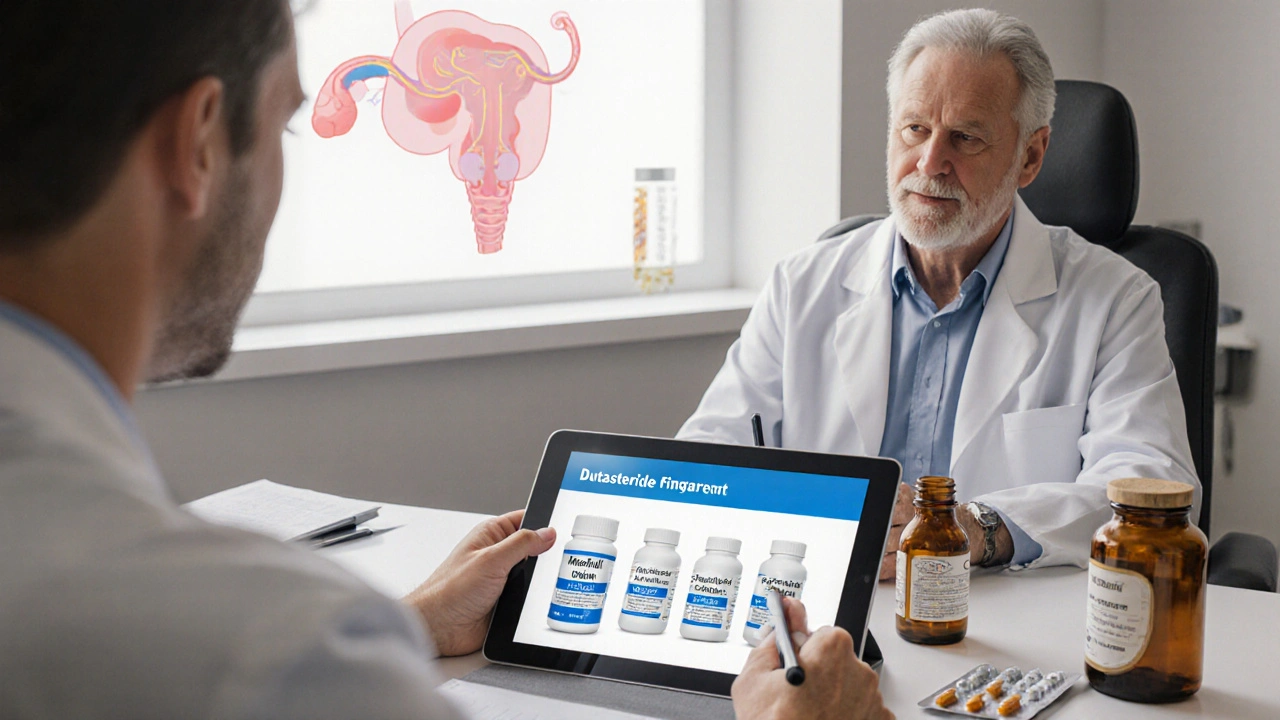When dealing with BPH treatment, the management of benign prostatic hyperplasia aimed at easing urinary problems. Also known as enlarged prostate therapy, it brings together drugs, procedures, and everyday habits to keep the bladder flowing. The most common medication group is Alpha blockers, agents that relax smooth muscle in the prostate and bladder neck, which act fast to improve urine stream. For longer‑term shrinkage, doctors often add 5‑alpha‑reductase inhibitors, drugs that block the hormone that enlarges prostate tissue. Together these drugs cover the majority of symptom relief needs. When medicines aren’t enough, minimally invasive procedures, techniques like TURP, laser ablation, or water‑based therapy that remove or vapourise excess tissue step in, offering quick improvement with short recovery. In short, BPH treatment encompasses medication, surgery, and lifestyle changes; each option targets a different part of the problem, from muscle tone to tissue growth, to bladder pressure.
While drugs and procedures form the backbone, many patients see real gains from simple habit tweaks. Reducing caffeine and alcohol can lower bladder irritability, and staying active helps maintain healthy hormone levels. A diet rich in fruits, vegetables, and healthy fats supports prostate health; studies show men who eat more lycopene‑rich foods experience milder symptoms. Regular pelvic floor exercises also strengthen the muscles that control urine flow, making the bladder less likely to overreact. For those concerned about side effects, knowing the safety profile of each medication helps. Alpha blockers may cause dizziness, while 5‑alpha‑reductase inhibitors can affect sexual function—but those issues often fade as the body adjusts. Discussing these nuances with a urologist ensures the plan fits your life, work schedule, and personal tolerance.
Choosing the right path isn’t a one‑size‑fits‑all decision. Age, prostate size, symptom severity, and other health conditions all shape the recommendation. A thorough evaluation—digital exam, ultrasound, and urine tests—lays the groundwork. From there, a step‑wise approach usually starts with the least invasive option and moves upward only if needed. The articles below break down each treatment type, compare costs and side‑effects, and offer tips for talking to your doctor. Whether you’re looking for quick relief, long‑term shrinkage, or natural strategies, the collection ahead gives you the details to shape a plan that works for you.

A detailed comparison of dutasteride (Dutanol) with finasteride, minoxidil, and saw palmetto, covering effectiveness, side effects, cost, and how to choose the right option.
